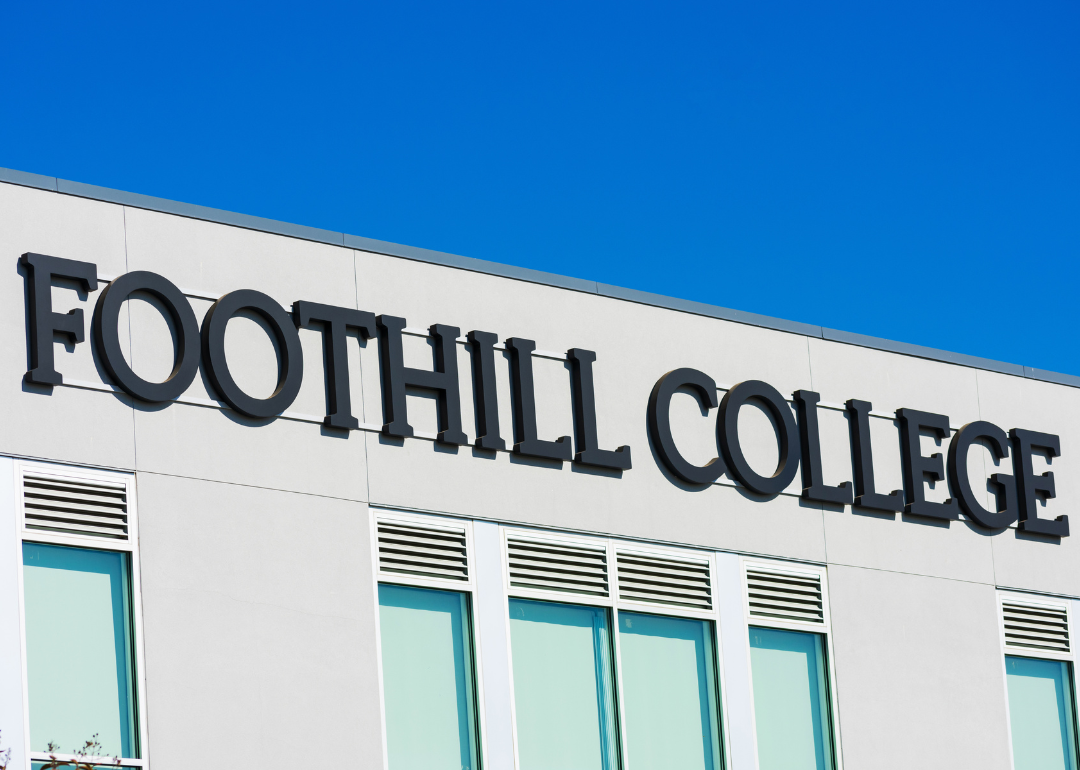wavebreakmedia // Shutterstock With college costs mounting and student debt remaining a hot topic of conversation, public opinion on four-year colleges has begun to shift, as people contemplate whether they are in fact the only–or best–option for all students. An estimated 7 million undergraduates enrolled in public, two-year colleges during the 2020-21 academic year according to the National Center for Education Statistics, representing 33% of all undergraduate students. While there are many reasons to choose a community college over a traditional four-year program, one key factor is cost. Student Loan Hero reports that the average cost-per-credit for a two-year public school is $158, compared to $448 for a four-year public school. This last number rises significantly–to $1,148 per credit hour–when that four-year school is out of state. Cheaper classes may put less pressure on students to settle and choose a career path immediately. Community colleges also allow for flexibility in ways traditional schools may not: Students who work full-time can attend school part-time and often in the evenings. Whether it’s to save money, to take advantage of the flexibility, or experiment with career choices, community colleges not only serve as an alternative but also a gateway to four-year universities. The cost of a four-year college education continues to dominate the national conversation as the United States now weathers the post-pandemic effects on higher education. The CARES Act allotted $14 billion to the Higher Education Emergency Relief Fund to aid students and institutions negatively impacted by COVID-19, but under-enrollment and funding issues persist. Many progressives have endorsed plans that would make public colleges free in America. Others are more skeptical, proposing more modest loan-forgiveness ideas. These changes would have substantial effects on the education sector. Stacker looked at data from Niche’s 2023 Best Community Colleges in America to compile this list of the top 100 community colleges nationwide. The data is based on rigorous analysis of academic, financial, and student life data from the U.S. Department of Education, along with reviews from students and alumni. The community college list includes public junior colleges, public technical schools, and all other public, two-year colleges. Read on to see how community colleges across the nation stack up. You may also like: College majors that earn the most money #100. Kansas City Kansas Community College Canva – Location: Kansas City, Kansas – Students: 1,568 – Student-to-faculty ratio: 13:1 – Graduation rate: 39% – Net price: $13,043 – Median earnings six years after graduation: $31,200 – Employment rate two years after graduation: 85% Kansas City Kansas Community College has been serving local students since its founding in 1923, celebrating its centennial this year. Part of the celebration included the opening of a residential hall on campus with a capacity for more than 200 students. #99. Harper College ProfReader // Wikimedia Commons – Location: Palatine, Illinois – Students: 4,405 – Student-to-faculty ratio: 21:1 – Graduation rate: 45% – Net price: $8,874 – Median earnings six years after graduation: $37,300 – Employment rate two years after graduation: 88% As far as namesakes go, Harper College couldn’t have a more apt one. The school was named for William Rainey Harper, a pioneer in the junior college movement in the United States who was also the first president of the University of Chicago. #98. Central Wyoming College Chevsapher // Wikimedia Commons – Location: Riverton, Wyoming – Students: 590 – Student-to-faculty ratio: 14:1 – Graduation rate: 33% – Net price: $5,827 – Median earnings six years after graduation: $28,400 – Employment rate two years after graduation: 83% Students interested in broadcasting have a unique opportunity at Central Wyoming College. The campus is home to Wyoming’s only public television network, Wyoming PBS. #97. Oakton Community College Sebastian Wahsner // Shutterstock – Location: Des Plaines, Illinois – Students: 2,491 – Student-to-faculty ratio: 14:1 – Graduation rate: 42% – Net price: $6,559 – Median earnings six years after graduation: $38,500 – Employment rate two years after graduation: 86% Movie buffs have a particular reason to attend Oakton Community College. The beloved 1984 cult classic film “Sixteen Candles” was filmed at the campus, albeit when the campus was home to another school. #96. San Diego Mesa College Roaming Panda Photos // Shutterstock – Location: San Diego, California – Students: 3,968 – Student-to-faculty ratio: 23:1 – Graduation rate: 29% – Net price: $7,617 – Median earnings six years after graduation: $37,800 – Employment rate two years after graduation: 83% With more than 3,900 students, San Diego Mesa College is the largest college in the San Diego Community College District. The Department of Education has also designated the school as a Hispanic Serving Institution thanks to its dedication to serving Hispanic, Latinx, and similar communities. You may also like: States spending the most and least per student on education #95. CUNY Kingsborough Community College Felix Lipov // Shutterstock – Location: Brooklyn, New York – Students: 6,854 – Student-to-faculty ratio: 22:1 – Graduation rate: 41% – Net price: $6,808 – Median earnings six years after graduation: $35,400 – Employment rate two years after graduation: 83% Since admitting its first class of students in 1964, Kingsborough Community College has played host to several important political figures over the years, including former Vice President Al Gore, First Lady Dr. Jill Biden, and former New York Governor Andrew Cuomo. #94. Manchester Community College – New Hampshire John Phelan // Wikimedia Commons – Location: Manchester, New Hampshire – Students: 676 – Student-to-faculty ratio: 12:1 – Graduation rate: 53% – Net price: $13,594 – Median earnings six years after graduation: $36,800 – Employment rate two years after graduation: 90% Manchester Community College – New Hampshire was created for military members coming home from World War II in 1945. Now, the school serves a much broader demographic, serving over 3,500 students per semester from 50 countries. #93. Mississippi Gulf Coast Community College Pi.1415926535 // Wikimedia Commons – Location: Fremont, California – Students: 3,309 – Student-to-faculty ratio: 23:1 – Graduation rate: 52% – Net price: $13,221 – Median earnings six years after graduation: $38,900 – Employment rate two years after graduation: 82% Ohlone College gets its name from the local Native American population in the area where it was founded. The school continues to promote ethnic diversity and inclusion among its student population. #36. Holmes Community College wk1003mike // Shutterstock – Location: Goodman, Mississippi – Students: 3,304 – Student-to-faculty ratio: 17:1 – Graduation rate: 49% – Net price: $6,045 – Median earnings six years after graduation: $28,300 – Employment rate two years after graduation: 87% Holmes Community College has been the starting point for numerous professional athletes. Major League Baseball player Roy Oswalt is an alumnus, as is National Football League player Walter Jones. You may also like: 30 celebs you didn’t know were Ivy Leaguers #35. Cuesta College Canva – Location: San Luis Obispo, California – Students: 2,987 – Student-to-faculty ratio: 23:1 – Graduation rate: 43% – Net price: $13,928 – Median earnings six years after graduation: $35,600 – Employment rate two years after graduation: 84% Cuesta College in San Luis Obispo has had a remarkably diverse graduating class in recent years. In 2019, the college graduated its largest number of students ever, including a 77-year-old, and 14 students with an average 4.0 GPA. #34. University of South Carolina – Lancaster
100 best community colleges in America















